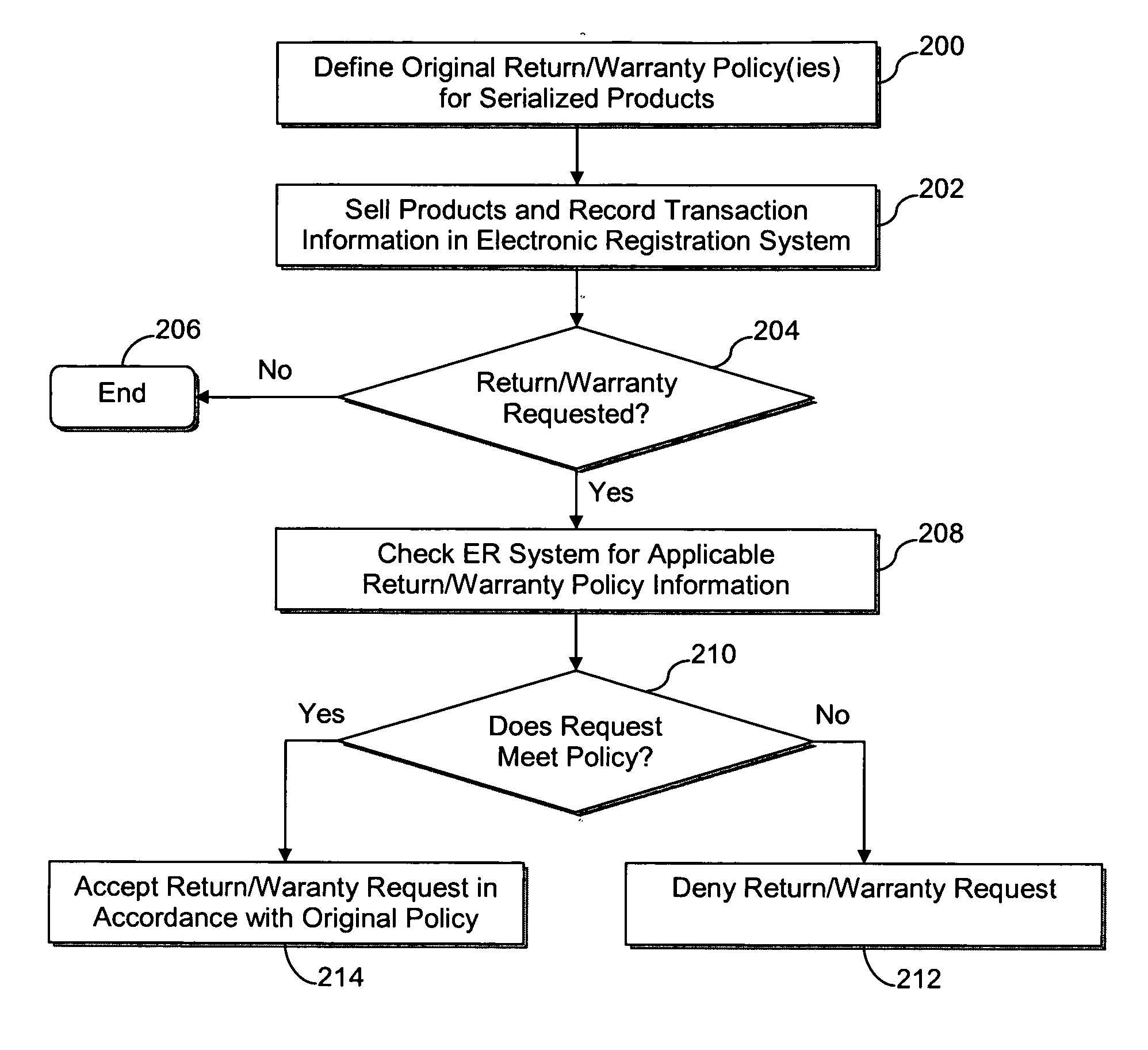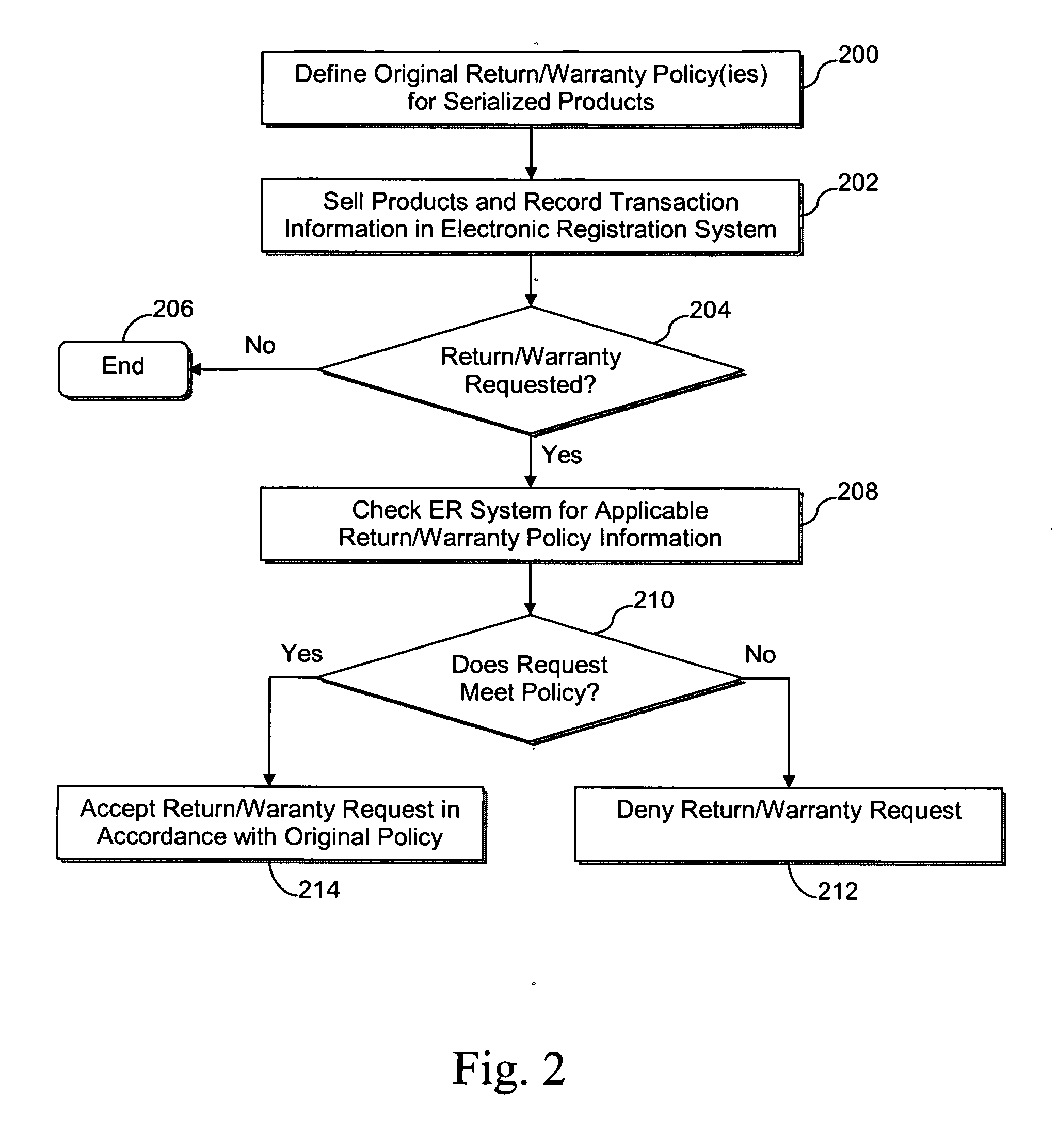System and/or method for handling returns involving products tied to post-paid subscriptions/services
- Summary
- Abstract
- Description
- Claims
- Application Information
AI Technical Summary
Benefits of technology
Problems solved by technology
Method used
Image
Examples
example scenario 1
Simple Return to Retailer
[0041]The first example scenario involves a simple return to the retailer within a predefined time period (e.g., 30 days) from the original sale date. Within the predefined time period, the customer may return the device to the retailer and cancel the service agreement. In this regard, FIG. 3 is a flowchart illustrating a process for a simple return to the retailer within a predefined time period from the original sale date, in accordance with certain exemplary embodiments.
[0042]In step 302, the customer presents the device for return at the retailer. The retailer then scans the device serial number to query the ER database (e.g., for later determining return eligibility) in step 304. In step 306, substantially real-time validation is performed against the national ER database, e.g., to determine return eligibility based on the item's original purchase record. From the customer's perspective, the return transaction is completed. In step 308, which is optiona...
example scenario 2
Cancellation with Service Provider and Device Return
[0043]At any time, the customer may choose to cancel the service agreement with the service provider, intentionally or unintentionally bypassing the retailer. In this regard, the second example scenario involves a cancellation directly with the service provider and a device return before the retailer is entitled to a commission from the service provider. FIG. 5 is a flowchart illustrating a process indicating what may happen in this scenario, in accordance with certain exemplary embodiments.
[0044]In step 402, a customer contacts the wireless service provider to cancel the services agreement with the service provider, absent direct involvement from the retailer. This sort of contact may be made by, for example, telephoning the service provider, accessing a website of the service provider, going to service provider's own POS location, etc. In step 404, the wireless service provider cancels the service agreement, and documents an “int...
example scenario 3
Cancellation with Service Provider and No Device Return
[0049]As indicated above, the customer at any time may choose to cancel the service agreement with the service provider, intentionally or unintentionally bypassing the retailer. In this regard, the third example scenario involves a customer cancelling directly with the service provider before the retailer earns a commission, and in which the customer does not return the associated product within a predefined time period following the cancellation, and FIG. 5 is a flowchart illustrating a process indicating what may happen in this scenario, in accordance with certain exemplary embodiments.
[0050]As shown in FIG. 5, a customer contacts the service provider to cancel the services agreement in step 502. It will be appreciated that the customer may contact the service provider in the above-described and / or any other appropriate way. In step 504, the service provider cancels the agreement, and documents the “interest” to help ensure re...
PUM
 Login to View More
Login to View More Abstract
Description
Claims
Application Information
 Login to View More
Login to View More - R&D
- Intellectual Property
- Life Sciences
- Materials
- Tech Scout
- Unparalleled Data Quality
- Higher Quality Content
- 60% Fewer Hallucinations
Browse by: Latest US Patents, China's latest patents, Technical Efficacy Thesaurus, Application Domain, Technology Topic, Popular Technical Reports.
© 2025 PatSnap. All rights reserved.Legal|Privacy policy|Modern Slavery Act Transparency Statement|Sitemap|About US| Contact US: help@patsnap.com



